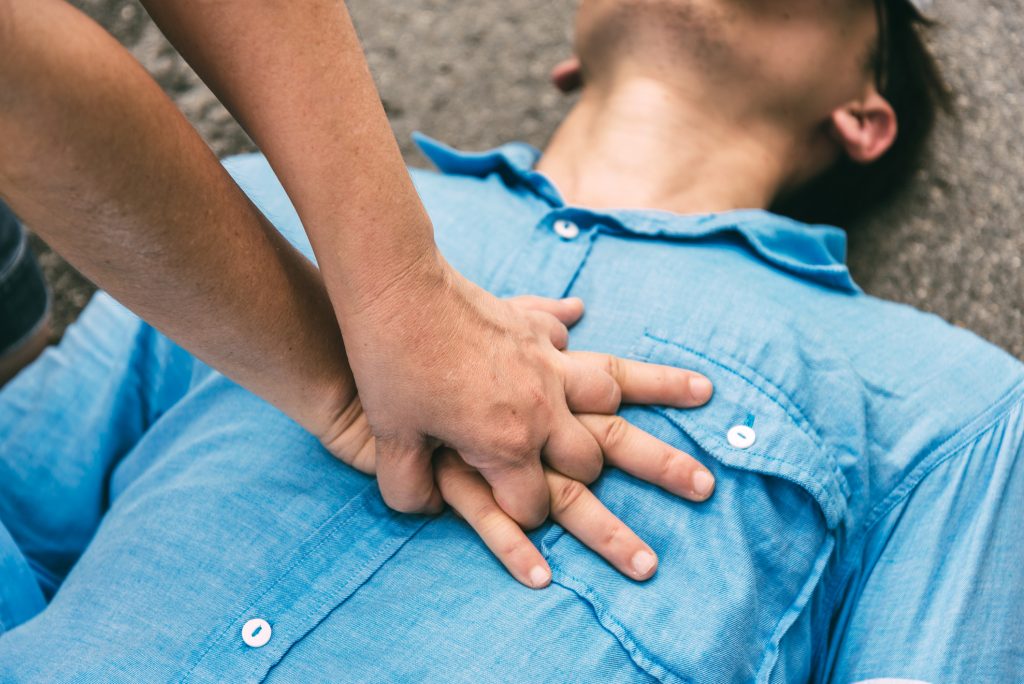What you should know about cardiac arrest
by the Thunder Bay Regional Health Sciences Centre Heart Month Group
 Find a training course near you by visiting www.heartandstroke.ca
Find a training course near you by visiting www.heartandstroke.caResponding fast can make the difference between life and death
A seemingly healthy person suddenly collapses, her heart stopped. Cardiac arrest can happen with no warning. But why? Who’s at risk? And how can you protect yourself?
Dr. Andrew Krahn, an internationally recognized expert in cardiac arrhythmias and head of cardiology at the University of British Columbia’s Faculty of Medicine, explains this frightening phenomenon – and how being prepared could help you save a loved one’s life.
What is cardiac arrest?
Cardiac arrest is an electrical malfunction that stops the heartbeat, shutting down the heart – like a breaker switch turning off all the power in a house. A person experiencing a cardiac arrest will collapse and be unresponsive.
How is it different from a heart attack?
A heart attack happens when a blocked artery slows or cuts off blood flow to the heart, but usually the heart continues beating. Typical heart attack signs are discomfort in the chest or upper body, shortness of breath, sweating, nausea and light-headedness.
What causes cardiac arrest?
Cardiac arrest can be caused by some types of arrhythmia, an irregular heartbeat that can short circuit the heart’s electrical system. And about one quarter of heart attacks actually trigger cardiac arrest – either immediately or within an hour or two. Other rare contributors to cardiac arrest include drug overdose, major electrolyte abnormalities, or large clots that block flow to the lungs.
Can cardiac arrest be treated?
In most cases the only way to correct a cardiac arrest is to deliver a shock from a defibrillator.
Are there any warning signs?
If you have fainted you should be evaluated by a physician because it may be a warning sign for a rhythm disorder that could cause cardiac arrest. Although fainting is a relatively common occurrence, if it occurs during physical activity, when swimming or from emotional excitement, it can be a warning sign of sudden arrhythmia death syndrome (SADS). Also, since heart attack can precede cardiac arrest, it’s critical to be aware of heart attack signs and get medical attention immediately. If you experience tightness in your chest, Dr. Krahn says, you should be aware that it isn’t necessarily from a pulled muscle.
What should you do if someone has a cardiac arrest?
- Phone 9-1-1 and shout for an AED (Automated external defibrillator).
- Push hard and fast in the centre of the chest.
- Use an AED if available.
Why is response time critical?
In cardiac arrest you typically have about five minutes to restore circulation. Most people don’t survive it because it’s unexpected, bystanders do not perform CPR or use an AED, or the ambulance doesn’t get there in time.
How do CPRs and AEDs help?
When the heart stops, blood flow to organs, like the brain, stops too. In most cases, the only way to correct a cardiac arrest is to deliver a shock from a defibrillator. CPR can keep blood moving through the body for a short period. An AED delivers an electrical shock that can restore the heart’s rhythm. Performing CPR and using an AED until emergency medical services take over can double the chance of surviving a cardiac arrest
Learn CPR: Find a training course near you by visiting www.heartandstroke.ca